How to Build a Web Application Using Java? According to Stack Overflow and Statista, Java is one of the most used programming languages for building web applications. As most of you may already know, Java is a high-level, object-oriented, class-based programming language. It is built to have minimum dependencies. After more than two decades of being released, Java is still loved by programmers.
As Java applications are compiled into bytecode, they can run on any JVM (Java Virtual Machine), regardless of the operating system and architecture of the computer system, hence offering portability. Moreover, Java offers Servlet and JSP technologies that help developers easily build and deploy a web application on the server. Like other languages, Java also has frameworks like Spring and Hibernate that simplify the web application development process.
Read: How To Create Backend APIs Using Spring Boot
But before moving on to how to build a web application using Java, let’s understand a few concepts.
What is a Web Application?
Unlike device-based applications, a web application is an application program or software that runs on a web server and uses web technologies to perform requested tasks on the internet. Web applications are stored in the remote server and delivered through a browsing interface like Google Chrome, Microsoft Edge, Safari, etc. through the internet.
Read: Web app development process
The ability to update and maintain web applications without the need to install the app on your device is the key reason for their high demands. Web applications can be simple single-page as well as multi-page with numerous features.
Read: How to make a Web Application step by step
Usually, the frontend web app is built using scripting languages like HTML, JavaScript and CSS that are supported by all the browsers. On the other hand, programming languages like Java, PHP, Python and databases are used to create the backend of the web app.
Read: How to Build a Java Application in Visual Studio Code
Now that we know what web applications are, let’s look at the technical terms that we need to be familiar with before creating a Java web application.
Defining Java Web Application Technologies
Although multiple technologies are used while creating web applications with Java there are a few that are most often used by developers, they are:
An IDE in Java is an integrated development environment that offers facilities like a compiler, interpreter, code editor and debugger for web app development.
-
Java Servlet API
The Java Servlet API are the programs that run on web or application servers. Servlet APIs are used to handle web server requests, process them, create responses and send the response back to the web server.
Read: How to Secure Containers
Servlets are used in Java to create web applications. In order to build a Java Servlet, Servlet API that consists of javax.servlet and javax.servlet.http that contain all the necessary interfaces and classes.
-
JavaServer Pages (JSP)
Java Server Pages or JSP is a technology that simplifies dynamic web app development. It also allows developers to add servlet code snippets directly to the text document. JSP consists of static data that can be expressed in different text-based formats and JSP elements determining how the page will create dynamic content.
-
JSP Standard Tag Library
JSTL contains all the common functionalities of JSP based applications. Rather than combining tags from different vendors, JSTL enables you to use a set of standard tags. With the help of this standardization, you can deploy applications on any JSTL supporting JSP container.
Read: Static Code Analysis Tools For Java
Moreover, JSP Standard Tag Library has conditional tags and iterators to manage the control flow, tags for accessing databases using SQL, changing XML documents and other common functions.
-
JavaServer Faces
JavaServer Faces or Jakarta Server Faces technology consists of a set of APIs that represent user interface components and manages their state and a JSP custom tag library that expresses the JSF interface within a JSP page. Java Server Faces is designed to be flexible hence it uses existing standard web-tier and UI concepts without limiting developers to a certain protocol, device or language.
Whether it is in-house or offshore Java development, these aspects are highly important for the general project's effectiveness.
Read: Code Analysis Tools For Java
Apart from that, the architecture of Java Server Faces clearly separates application logic from presentation while making the connection between application code and presentation layer easier.
-
JDBC API
The Java Database Connectivity (JDBC) API gives universal access to data. Using JDBC API, developers can access any data source from spreadsheets to relational databases and flat files. Java connects, manipulates, and gets data from the database with two packages, java.sql and javax.sql.
-
Java Persistence API
The Java Persistence API gives an object/relational mapping facility that helps developers in managing relational data in Java web applications. JPA internally defines the object-relational mapping and standardizes these mapping objects by using XML or annotations to map objects into database tables.
-
JAXP
Java API for XML Processing or JAXP helps in processing XML documents through Simple API for XML, Document Object Model, and Extensible Stylesheet Language Transformation. It also offers support for namespace so that as a developer you can work with schemas.
How to Create a Web Application using Java?
How to Build a Web App Using Java? Before creating any web application it is important to install Java, IDE (Eclipse or Netbeans) for writing code, Server (Tomcat) as web container for Servlet, and Database (MySQL or Oracle) on your system properly.
Read: Design Patterns in Java
Tomcat can be configured with Eclipse for easy development and deployment of applications. Choose Server Runtime Environments from Eclipse Preferences and find the version of your Tomcat server. For the runtime environment, specify the apache tomcat directory location and the JRE information. Create the server by going to the server's interface. And voila, we are prepared to create and run our first servlet on the tomcat server.
Read: Kubernetes vs Docker Swarm
Now open the Eclipse IDE, select file > new > Dynamic Web Project. Enter the project name as FirstServletProject, use default settings for the project location, then click on Next, tick on generate web.xml deployment descriptor and click on finish button.
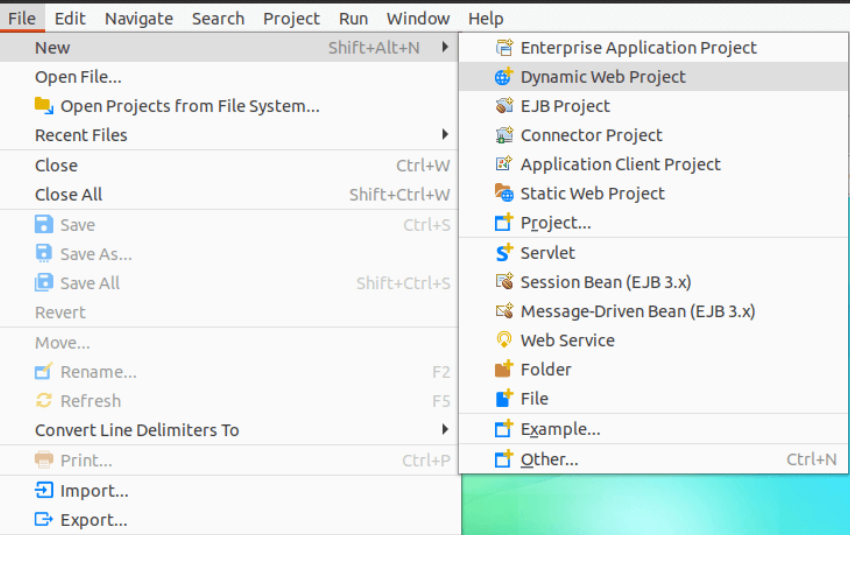
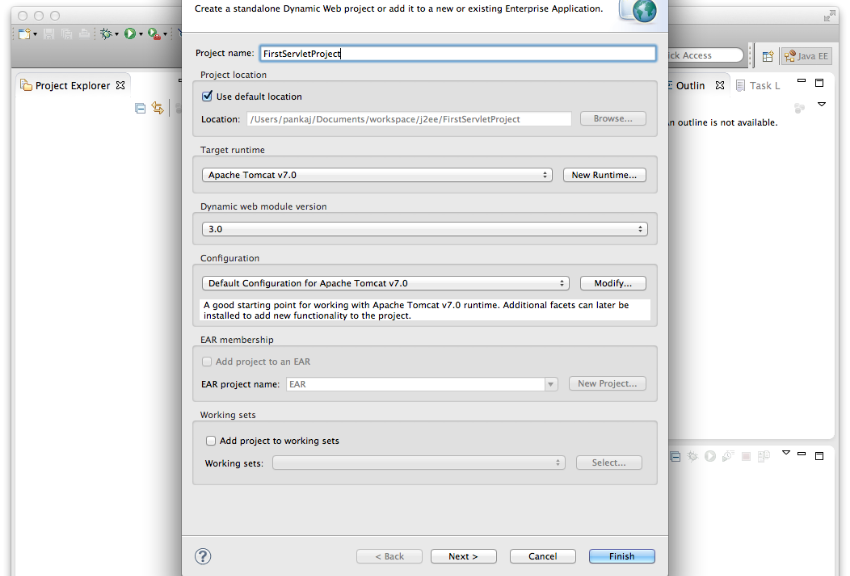 Now to create the Servlet, select File > New > Servlet and click on the finish button that will generate the skeleton code of the servlet.
Now to create the Servlet, select File > New > Servlet and click on the finish button that will generate the skeleton code of the servlet.
Once the servlet is created it is time to add some HTML with the GET method to invoke HTTP requests as below and run the servlet.
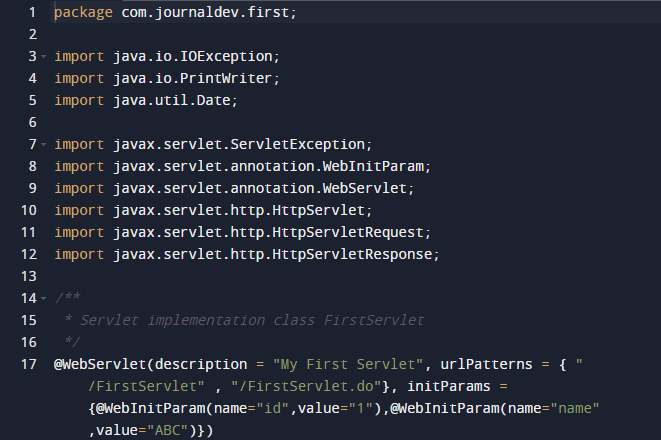
Read: How to Deploy Microservices Using Serverless Architecture
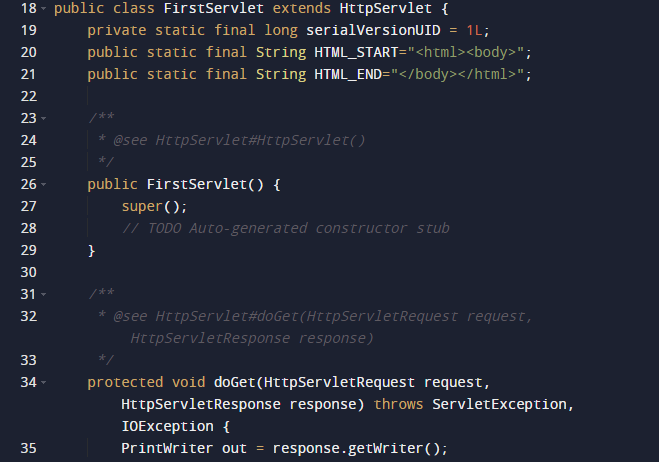
Read: Top best Tools for Monitoring Microservices

Now while we run our Servlet it will display several errors because the servlet-api jar file is not added yet. So, we will add the jar file by right-clicking on the project and then going to the Build Path > Configure Build Path > Add External JARs option.
From there you can navigate to the directory where the server is installed, choose the servlet-api.jar file, click open to continue and click on apply and close to add the jar file to the project.
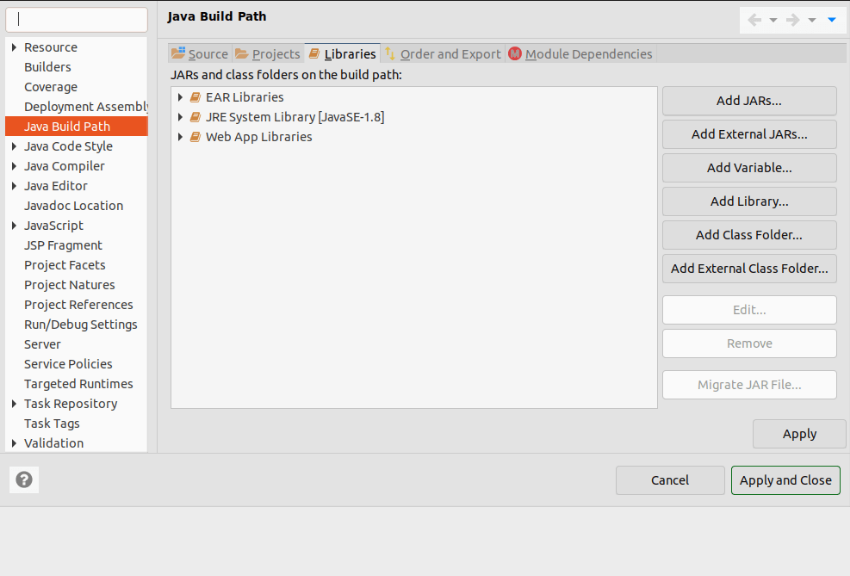
Although servlets are good in the beginning, they are difficult to read and maintain with huge responses containing dynamic data. It is for this reason that JSPs were introduced.
Read: Best Practices for Testing APIs
The JSP technology is also server-side and has the same features like HTML, but it can also add dynamic content as needed. Because JSPs are like HTML, they are easy to write and are good for presenting data.
Using the JSP code in the image below, we achieve the same result as the servlet code.

To run the app, you need to right-click on the project and select Run-> Run on Server option to run it on the server.
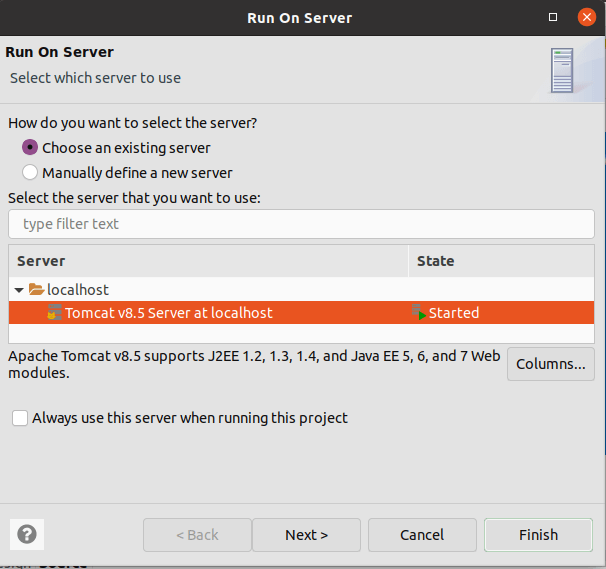
It will take some time for the app to load. But the output while using JSP or Servlet file will be the same: “Hi There!” along with the date and time.”

Conclusion
So that was it, we hope that you enjoyed the blog and this was helpful for you. If you are a developer, you can create your first web app with Java using the above-mentioned methods. On the other hand, if you are a business owner who has an idea for web application development, you can hire developers from our team who have gained years of experience and knowledge in the same area.

